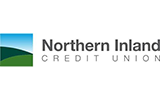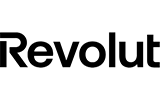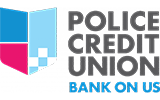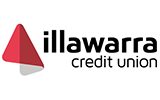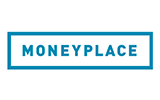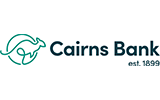What is a green loan?
A green loan is a personal loan used to fund eco-friendly purchases – like solar panels, home battery systems, or energy-efficient appliances. It works like a regular loan but often comes with perks such as lower interest rates or reduced fees to encourage sustainable upgrades.
How do green personal loans work?
Green loans function like regular personal loans but are tailored for upgrades that reduce your environmental footprint. Here’s what to know:
- Available as either secured or unsecured personal loans
- Choose between fixed or variable interest rates
- Loan terms usually range from 1-7 years, with some up to 10 years
- You can generally borrow up to $100,000
- While some fees may be waived, application or monthly fees can still apply
- Approval hinges on strict green criteria stipulated by the lender
What can green loans be used for?
What you can use a green loan for will depend on the lender, but as a general guide, they typically cover:
- Solar panels, inverters, battery storage systems, solar hot water units and solar pool heaters.
- Eligible low-emission or electric vehicles (usually financed through a green car loan) and EV charging infrastructure.
- Double-glazed windows or external awnings to help regulate indoor temperatures.
- Rainwater tanks or grey water treatment systems to conserve water and support home irrigation or toilet flushing.
- Roof and underfloor insulation, as well as home ventilation systems, to reduce reliance on heating and cooling.
- Approved split systems, reverse-cycle air conditioners, evaporative coolers or energy-efficient heaters.
- Energy-efficient appliances such as fridges, washing machines, dishwashers and other white goods that meet specific energy rating standards (i.e. 4.5 stars out of 6).
- Switching from non-LED lighting (i.e. halogen, CFL or incandescent) to LED lighting.
- Electric bikes and e-scooters.
Pros and cons of green loans
Pros
- Green finance rates on secured personal loans are often lower than standard personal loans.
- Some lenders waive costs, such as application and ongoing fees.
- Most loans have flexible terms, repayment cycles and features.
Cons
- Strict eligibility rules means not all upgrades or purchases qualify.
- A smaller pool of lenders to choose from compared to regular loans.
- Requires upfront proof of purchase or quotes for approved green products.
Sharper rates available on secured green loans

Sean Callery, Editor of Money.com.au
"Lenders tend to offer their lowest green loan rates to borrowers who secure the loan with an asset – like the electric car they’re buying or even their home. Because the loan is backed by something of physical value, it’s less risky for the lender. Some banks also reserve their best green loan rates for their existing home loan customers, which means not everyone will be eligible for the top deals."
Sean Callery, Editor of Money.com.au
Low rate green personal loans
| Loan | Interest rates from | Comparison rates from^ | Loan amounts |
|---|---|---|---|
| Northern Inland Credit Union Green Loan | 5.49% | 5.49% | $1 - $25,000 |
| Horizon Bank Personal Loans Secured by Mortgage | 5.79% | 7.84% | $500 - $100,000 |
| Horizon Bank Personal Loans Secured by Deposits | 5.79% | 6.00% | $500 - $100,000 |
| NOW Finance Unsecured Personal Loan | 5.95% | 5.95% | $5,000 - $50,000 |
| Great Southern Bank Green Personal Loan | 5.99% | 5.99% | $5,000 - $75,000 |
| Queensland Country Bank Green Reno Loan | 6.04% | 6.04% | $3,000 - $60,000 |
| Credit Union SA Tesla Powerwall Loan (Secured) | 6.14% | 6.49% | From $500 |
| Revolut Personal Loan | 6.17% | 6.17% | $5,000 - $50,000 |
| Police Credit Union Solar Eco Loan | 6.24% | 6.24% | $5,000 - $100,000 |
| Community First Bank Green Loan | 6.29% | 7.34% | $1,000 - $1,000,000 |
How to get the best green loan
Decide if secured or unsecured suits you
Secured green loans usually offer lower interest rates because they’re backed by an asset (e.g. car, property, term deposits). If you don’t have an asset to offer or prefer not to risk one, an unsecured loan may be more ideal, though it typically comes with higher rates.
Compare fixed vs variable rates
A fixed-rate personal loan gives you certainty with consistent repayments, while a variable-rate loan may start lower but can rise over time. Choose the option that best suits your budget and tolerance for rate changes.
Look for competitive interest rates
Interest rates vary widely between lenders, and most advertise their lowest rate to grab your attention. In reality, those rates are usually reserved for borrowers with an excellent credit score. Lenders offer a range of rates based on your financial profile, so if you want a clearer picture of what you’ll actually qualify for, consider speaking with a personal loan broker.
Don’t overlook the fees and charges
Check for application fees, monthly account fees, or early repayment penalties. Some green loans come with low or no fees so read the fine print carefully. A high comparison rate (relative to the advertised interest rate) is often an indication that the loan is fee-heavy.
Choose a suitable loan term
Green loans typically run from one to seven years, with some extending up to 10. While longer terms reduce your regular repayments, they can increase the total interest paid and may outlast the period in which the technology delivers its highest return. For example, the typical payback period of a solar system is around five years. While you’ll still benefit from lower bills and feed-in tariffs beyond that point, it may not make sense to stretch the loan far beyond the system’s most productive years.
Consider flexibility
The best green loans allow you to make extra repayments or pay off the loan early without incurring charges. Others may offer redraw (usually up to a limit) so if you’re ahead on your repayments, you can access the cash if needed.
Take advantage of any extra perks
While not essential, some green loans come with added perks, like free roadside assistance for EVs, discounts on solar products, or bundling deals if you're already a customer. These extras aren’t deal-breakers, but they can sweeten the offer.
Am I eligible for a green loan?
Eligibility is where green loans set themselves apart from regular personal loans. Here’s what most lenders typically look for:
- You’re at least 18 years old
- An Australian citizen or permanent resident
- Currently employed or earning a stable income (this can include self-employed or those with alternative documents through a low doc personal loan)
- You satisfy the lender’s minimum credit score (some lenders may consider applicants for personal loans with bad credit)
- Your purchase meets the lender’s definition of “green.” For example, solar systems installed by a Clean Energy Council-accredited provider or appliances with a specific energy star rating
How to apply for a green or solar loan
Here’s a step-by-step guide to applying for a green loan to fund eligible energy-efficient upgrades:
1. Gather your documents
Collect the essentials: proof of ID, recent payslips or tax returns, bank statements, and details of any existing loans or credit cards. You’ll also need quotes or invoices for the green product or service you’re financing.
2. Submit your application
Apply directly with a lender or through a loan broker. Some lenders offer instant approval or fast turnaround (typically 1-2 business days), especially if your paperwork is complete and you meet the lending criteria.
3. Confirm green loan eligibility
You may need to provide extra details about your purchase, such as product specs, energy ratings or proof that the installer is accredited (e.g. approved by a third-party regulator or from the lender’s panel of dealers).
4. Get approved and proceed with purchase
Once approved, you can go ahead with the purchase. Funds are usually transferred directly to your account or paid to the supplier, depending on the lender’s process.
Keep in mind that not all lenders advertise these products as “green loans”. Some offer standard personal loans simply with a discounted interest rate or no/low fees for satisfying green-friendly conditions. It’s also worth checking if your state government offers rebates or incentives that can be combined with your loan to reduce your out-of-pocket costs even further.
Tips on getting your green loan approved
Get your finances in shape
Before applying, reduce your existing debts (e.g. car loans) where possible and avoid big spending. A clean transaction history and healthy savings balance can make a strong impression.
Check your credit score
Your credit score plays a big role in the rate you’re offered – or whether you’re approved at all. See where you stand by using a free credit reporting agency like Equifax or Experian.
Stick to eligible products and installers
Make sure your home upgrade or product qualifies under the lender’s green loan criteria. That often means choosing energy-rated appliances (typically above 4) or using solar installers accredited by the Clean Energy Council.
Avoid submitting multiple applications
Every loan application leaves a mark on your credit report. Applying with several lenders at once can hurt your credit score and reduce your chances, so consider using a broker to help you find the right match instead.
Ready to compare green loans?
Get your best offers from multiple lenders. There's no obligation and checking your rates won't impact your credit score.


